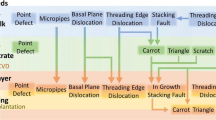Abstract
Myriad structures for stacking chips, power devices, smart cards, and thin substrates for processors have one thing in common: thin silicon. Wafer thinning will soon be an essential process step for most of the devices fabricated and packaged henceforth. The key driving forces for thinned wafers are improved heat dissipation, three-dimensional stacking, reduced electrical resistance, and substrate flexibility. Handling of thin and ultrathin substrates however is not trivial because of their fragility and tendency to warp and fold. The thinned substrates need to be supported during the backside grinding process and through the subsequent processes such as lithography, deposition, etc. Using temporary adhesives to attach the processed device wafer to a rigid carrier wafer offers an efficient solution. The key requirements for such materials are ease of application, coating uniformity with minimal thickness variation across the wafer, good adhesion to a wide variety of surfaces, thermal stability in processes such as dielectric deposition and metallization, and ease of removal to allow high throughput. An additional requirement for these materials is stability in harsh chemical environments posed by processes such as etching and electroplating. Currently available materials meet only a subset of these requirements. None of them meet the requirement of high-temperature stability combined with ease of removal. We have developed adhesives that meet a wide range of post-thinning operating temperatures. Additionally, the materials are soluble in industry-accepted safe solvents and can be spin-applied to required thicknesses and uniformity. Above all, the coatings can be removed easily without leaving any residue. This paper reports on the development of a wide range of temporary adhesives that can be used in wafer thinning applications while applying both novel and conventional bonding and debonding methods.
Similar content being viewed by others
References
F. Niklaus., G. Stemme, J.Q. Lu, “Adhesive wafer bonding,” J. Appl. Phys., 2006, 99, 031101.
J. Moore, A. Smith, D. Nguyen, S. Kulkarni, “High Temperature Resistant Adhesive for Wafer Thinning and Backside Processing,” MANTECH 2004, 8.10.
C. Brubaker, M. Wimplinger, A. Malzer, P. Lindner, “Advances in Processing of Compound Semiconductor Substrates,” MANTECH 2005, p. 261.
S. Combe, J. Cullen, M. O’Keefe. “Reversible Wafer Bonding: Challenges in Ramping up 150mm GaAs Wafer Production to Meet Growing Demand,” MANTECH 2006, p. 193.
Y. Kwon, J. Seok, “An evaluation process of polymeric adhesive wafer bonding for vertical system integration,” Japanese Journal of Applied Physics, Part 1, vol. 44, no. 6A, 2005, pp. 3893–3902.
Author information
Authors and Affiliations
Rights and permissions
About this article
Cite this article
Puligadda, R., Pillalamarri, S., Hong, W. et al. High-Performance Temporary Adhesives for Wafer Bonding Applications. MRS Online Proceedings Library 970, 409 (2006). https://doi.org/10.1557/PROC-0970-Y04-09
Received:
Accepted:
Published:
DOI: https://doi.org/10.1557/PROC-0970-Y04-09




